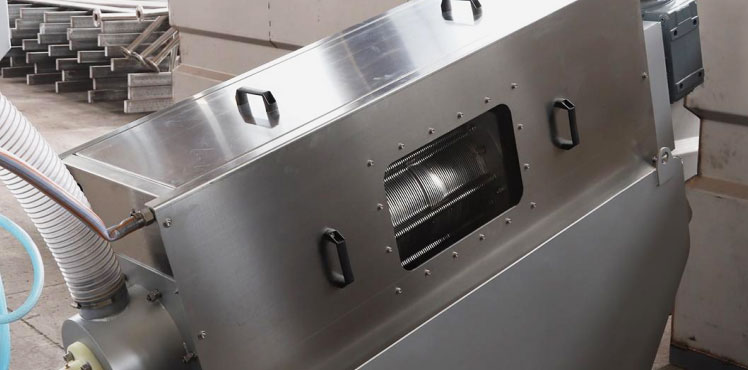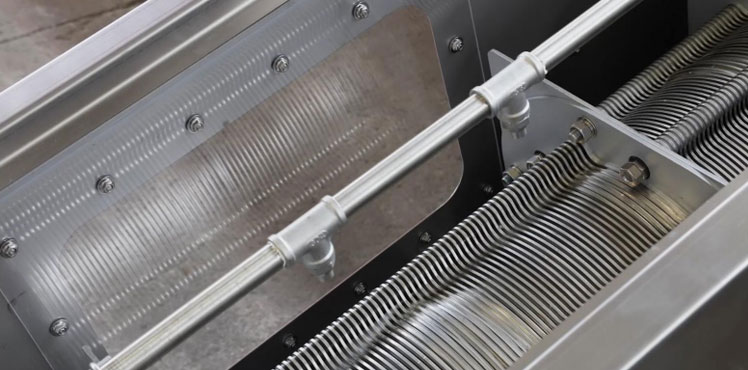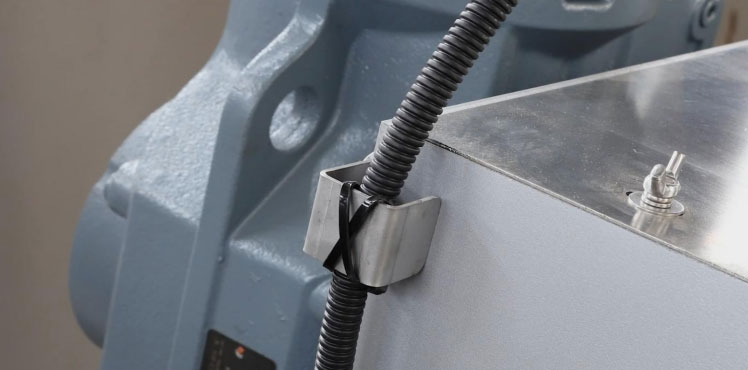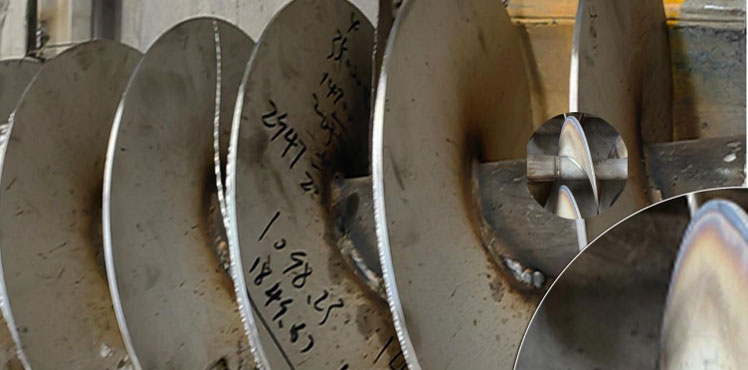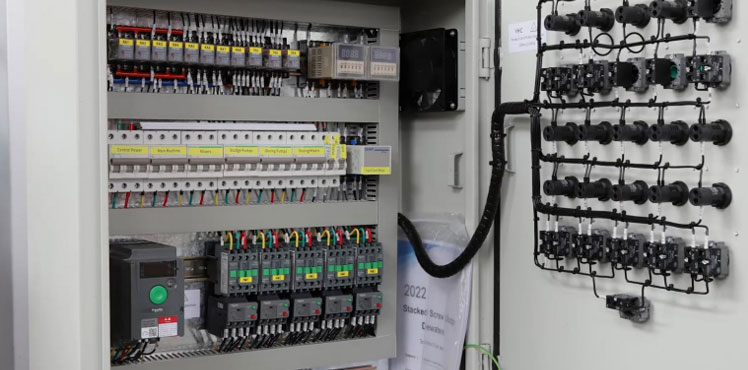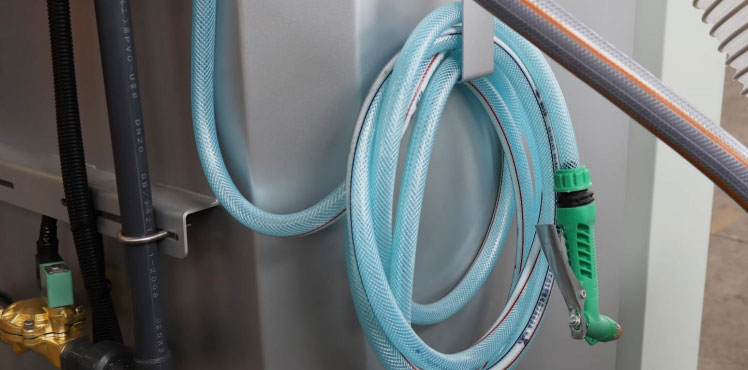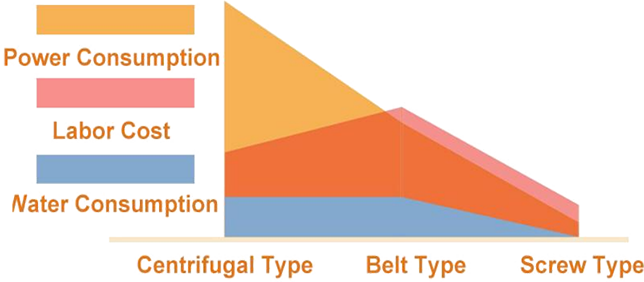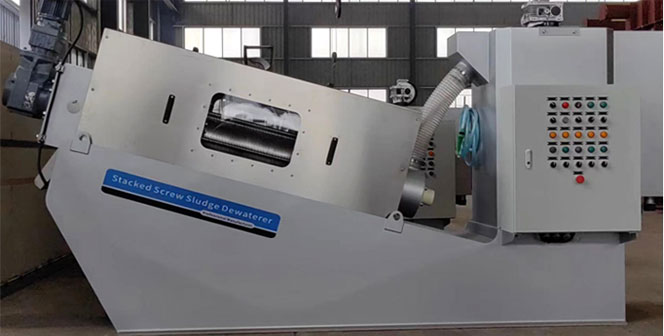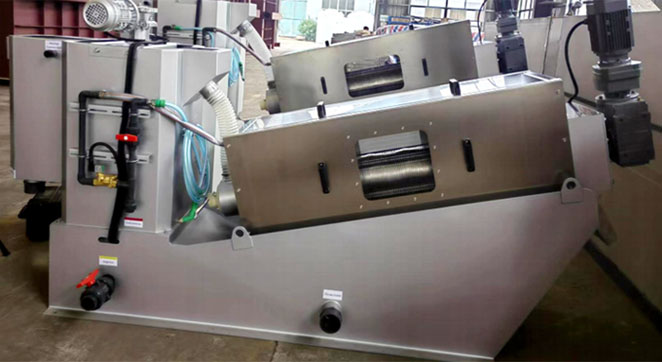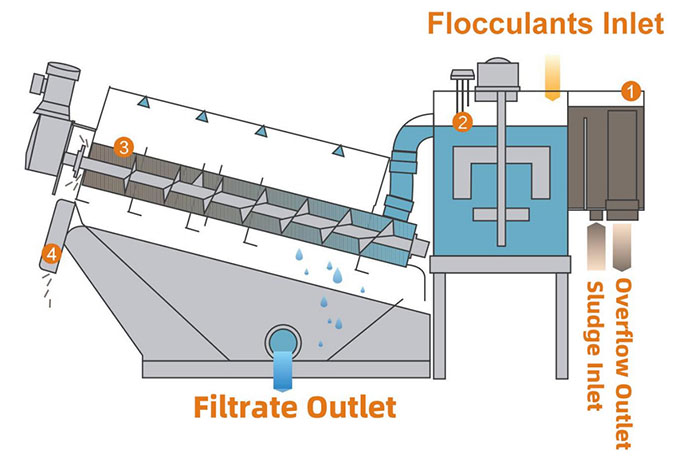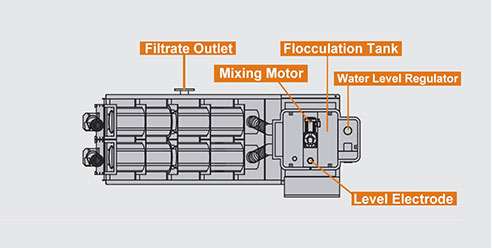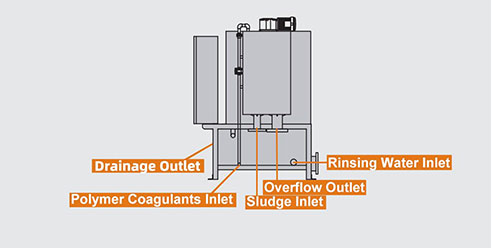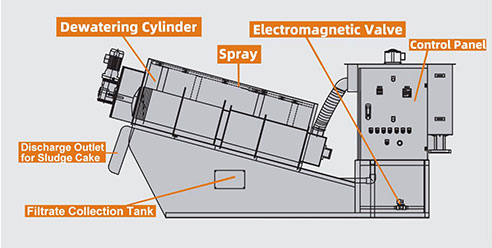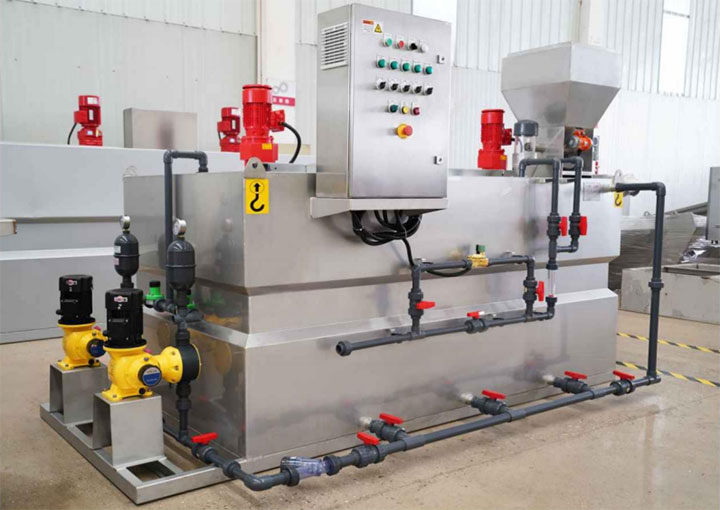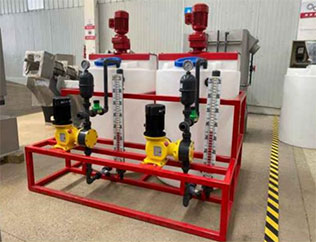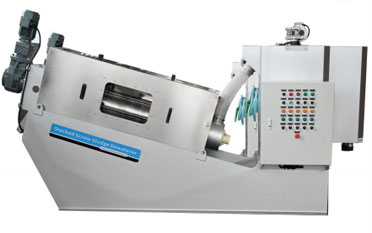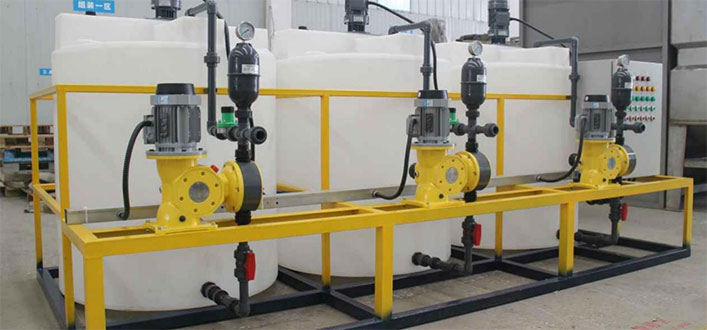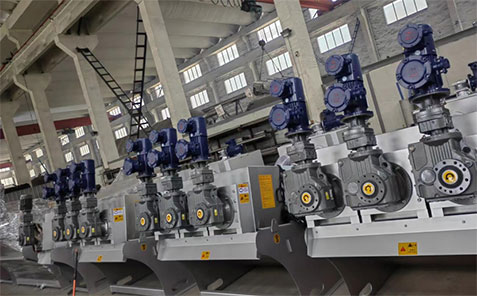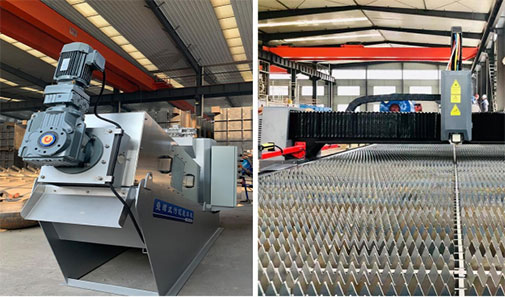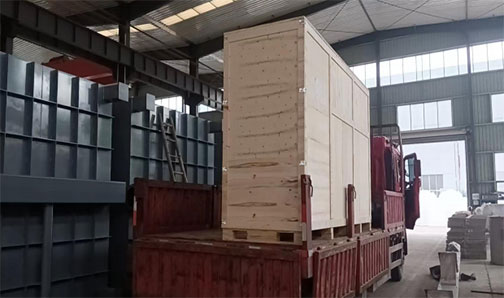Operating Procedures and Daily Operational Precautions for the Spiral Sludge Dewatering Machine
1 . Inspection before starting the equipment
The screw stacker can efficiently dewater sludge, reduce waste volume, and reduce waste disposal costs. It usually has an automated control system that can adjust operations as needed, reducing operator intervention and reducing labor costs. In order to ensure the good operation of the sludge dewatering screw press, equipment inspection is essential.
First check whether there are any debris in the mixing tank , secondly check whether the filter body has drained out sludge , and finally check whether there are large pieces of mud at the head of the spiral shaft.
2 . Equipment usage steps
PAM flocculation agent into the preparation system and turn on the stirring device at the same time:
(1) Use a nozzle to manually clean the moving and fixed ring pieces on the main body of the snail stack for about two minutes .
(2) Turn on the drive motor of the main body of the sludge dewatering screw press and check whether its rotation direction is correct. The main body of the snail stacker needs to be sprayed for 1-2 minutes.
(3) Turn on the flocculant supply pump and start working. At the same time, the mud pump and flocculation stirring motor must be turned on and run together;
(4) The above operations are all ok. Start adjusting the mud inlet volume , the rotation speed of the main spiral shaft , and the plate spacing of the mud outlet bucket to optimize the mud outlet volume and sludge moisture content.
(5) Finally, check whether there is any abnormality in the rotation of the screw shaft , whether the mud level in the mixing tank is too low or too high, and whether there is any abnormal noise from any part of the equipment during operation. If the above abnormality occurs, stop the operation immediately and conduct maintenance.
3. How to choose the model of sludge machine
Determine treatment capacity: The most important thing is to determine the amount of sludge you need to process. This is usually measured in terms of processing capacity per hour (usually expressed in cubic meters/hour or tons/hour). Make sure the sludge dewatering screw press model you choose has enough processing power to meet your needs.
Understand the properties of sludge: Different types of sludge may require different models of sludge dewatering screw press. Understand the properties of the sludge you are handling, including solids content, particle size and concentration , so you can choose the right snail stacker.
Consider dryness requirements: Determine your dryness requirements for your dewatered sludge. Different models of sludge dewatering screw press can achieve different degrees of dehydration, thus affecting the final sludge dryness.
Understand the power and energy requirements: Understand the power and energy requirements of your chosen sludge dewatering screw press to ensure your facility can meet these needs.
When choosing a sludge dewatering screw press, it is best to consult a professional engineer or wastewater treatment expert for advice on the best option. We can provide customized advice based on your specific circumstances and needs to ensure that the sludge dewatering screw press will meet your requirements .





 English
English
 عربى
عربى
 Español
Español

















